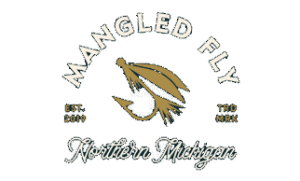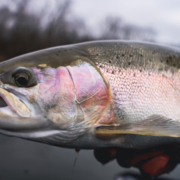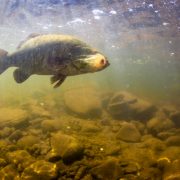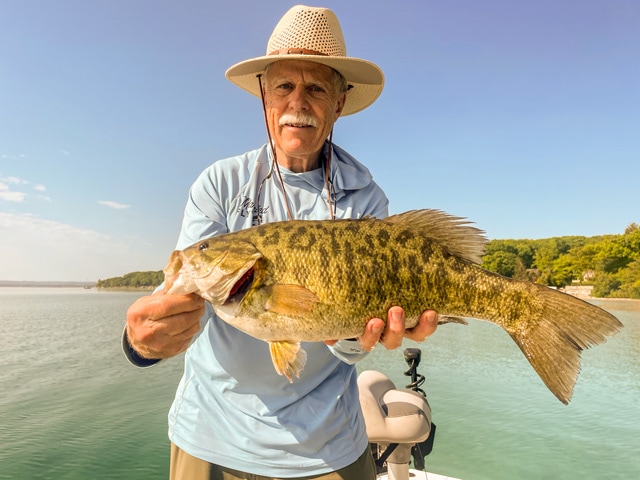
When you spend a lot of time on a river, you eventually learn some of the subtle changes that over the course of a season. These small changes can have a big impact on the fishing.
Through the late spring and early summer, I spend a lot of time fishing along rocky banks with crayfish patterns or poppers depending on the activity levels. This type of fishing becomes inconsistent in the middle of the summer on my home river, the Muskegon.
The target species in the summer is smallmouth bass and any other warm water fish that will bite. Smallmouth are built to eat crayfish, but they are glutonous fish, gorging on whatever is most available to them.
You would think that this would be obvious but it was not always clear to me–during the summer the slower edges of the river become weedy, and in many places smallmouth simply shift over to the weeds. They cruise these weedbeds in search of mature minnows that have become super abundant. Often these weedbeds are directly opposite of the rocky, classic smallmouth spots. On a large river, this makes such spots easy to overlook.
These baitfish are the shiny type minnows such as shiners, chubs, and daces. They permeate the water column. I do a bit of snorkeling in my free time. It is enjoyable and very educational. Typically the biggest species of baitfish are toward the bottom of the water column. They can be quite large and there are silly amounts of them in the tailwater rivers. It is not uncommon to see common shiners and chubs that are over 6-8 inches in length. Because of the large size of many of the baitfish, large attractor patterns can work very well around the weeds. Utilize colors such as yellow and white for best success.

Hornyhead Chubs are a classic example of a large baitfish living in the weeds
I used to be fixated on the bottom of the river when snorkeling, until one day I happened to look up agains the surface. There, in the top few inches of the water column, I was shocked to see a large number of colorful shiner minnows. These minnows move very quickly! I came to know these fish as rosy face shiners and they are a very abundant food source among the weedbeds. These small and quick fish are typically 2-4 inches in length, and this size is often preferred by smallies. A good imitation of these can be tied simply: bead chain eyes, wing of gray-olive craft fur, flashabou, and a head of cinnamon ice dub (or red foam if you want a sly and deadly popper). This fly should be fished stripped quickly with a pause.

Rosyface shiners are common along weeds in the upper part of the water column

If you are fishing rocky smallmouth habitat and have a hard time finding fish, don’t hesitate to fish a shiner pattern above the weeds or a big baitfish pattern a little deeper. A lot of times a change of fly selection and habitat is all it takes to find fish.
-Kevin Feenstra













 If Michigan’s government wanted to send over 200,000,000 gallons of our precious spring water to another part of the country would you be for that? What if that water was coming from a key aquifer that feeds the Muskegon river system? That’s exactly what Nestle would like to do. A current proposal under consideration by the Michigan Department of Environmental Quality (DEQ) is requesting “a large quantity increase” in extraction from the company’s Evart, Michigan facility. In case you’re wondering what a “large quantity” is, Nestle is seeking a nearly 300% increase in the volume of water it extracts (Source:
If Michigan’s government wanted to send over 200,000,000 gallons of our precious spring water to another part of the country would you be for that? What if that water was coming from a key aquifer that feeds the Muskegon river system? That’s exactly what Nestle would like to do. A current proposal under consideration by the Michigan Department of Environmental Quality (DEQ) is requesting “a large quantity increase” in extraction from the company’s Evart, Michigan facility. In case you’re wondering what a “large quantity” is, Nestle is seeking a nearly 300% increase in the volume of water it extracts (Source: 